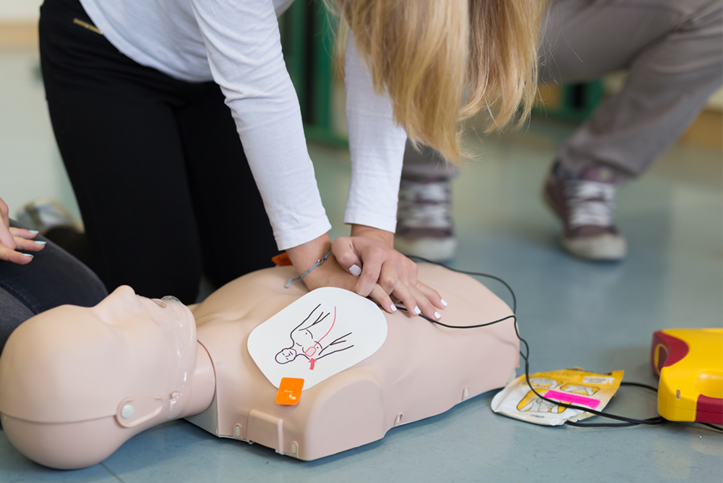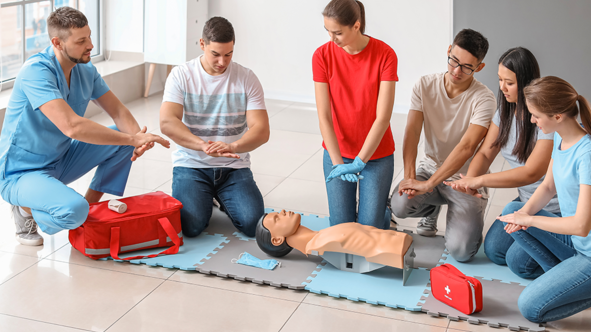Why?
Did you know that 400,000 people suffer cardiac arrest every year in Europe alone? 9 out of 10 times the outcome is fatal. The first few minutes after cardiac arrest are a matter of life and death. Immediately starting with chest compressions doubles the chances of survival. This practical course teaches the basic techniques of resuscitation and how to use an AED device. This will allow you to act correctly in the event of cardiac arrest and bridge the time until emergency services arrive.
What do you learn?
This course is all about practice. You will learn the basic principles of resuscitation and discover how to operate a Category 1 Automatic External Defibrillator. With an AED device you cannot apply manual shocks and there is no screen to monitor the heart rate.
After some theory, you will practice heart massage and the use of an AED on a resuscitation dummy.
There is a maximum of 15 participants per course.
Learning programme:
- Basic principles of resuscitation.
- Resuscitation techniques.
- Use of an AED device.
- Practicing heart massage and AED use on a dummy.
This course is part of our Interact-offer

Talk to an expert, share your experiences, and learn from each other. Learning is a social experience. You learn to apply basic knowledge in practice, both online and in the classroom.
Result?
After this course, you will have mastered the basics of resuscitation. You will learn how to operate an AED device. In concrete terms, this course will teach you:
- How to apply Basic Life Support (BLS) including monitoring of vital functions, approaching the victim, alerting emergency services and applying resuscitation techniques.
- Resuscitation and use of the Automatic Electric Defibrillator (AED) until emergency services arrive.
For whom?
This course is for anyone who wants to learn how to resuscitate and how to use the automatic external defibrillator (AED).
What does the law say?
As an employer, you are legally obligated to:
- Make sure first aid is available in the event of someone falling ill or getting an accident at work.
- Be able to transport the victim if necessary.
- Call for emergency services if necessary.
This obligation applies to your own staff as well as others who may be present. It is also important to have the main telephone numbers and addresses of ambulance, taxi services etc. available immediately.
Mensura is listed by the Federal Public Service on Employment, Labour and Social Dialogue (FOD WASO) as an authorised institution to offer this course. More info >
Price
The price depends on how you follow the training.
If your organisation is affiliated with Mensura External Service for Prevention and Protection at Work (ESPPW) and you have prevention units, you can pay with these as long as your balance is sufficient.
Subsidies and financing options
We qualify for all kinds of subsidies and financing options because we are certified by many government agencies and sector funds.
- SME-Portfolio. Use these certification numbers in your request:
- members of Mensura External Department for Prevention for Prevention and Protection: Mensura EDPB - DV.O105072
- non-members: Mensura CONSULT - DV.O101943
- Training cheques - Wallonia
- Sector fund
- Alimento
- Constructiv
Frequently Asked Questions
What is the difference between an initiation, a refresher course, and a basic course?
An initiation is an awareness training for all staff in your company. This ensures everyone reacts appropriately in the event of an accident. You do not receive an official certificate.
After a basic course, you receive a certificate and are then a first aider in your company. You retain that certificate on completion of the mandatory annual refresher course.
How many first aiders are needed in my organisation?
This is determined by the risk analysis. You can find a recommendation per sector here.
Is something unclear? Then contact your external Mensura prevention adviser.
If I take the first aid basic course, do I still need AED training?
No. You have already received an explanation about AED in your basic course.




